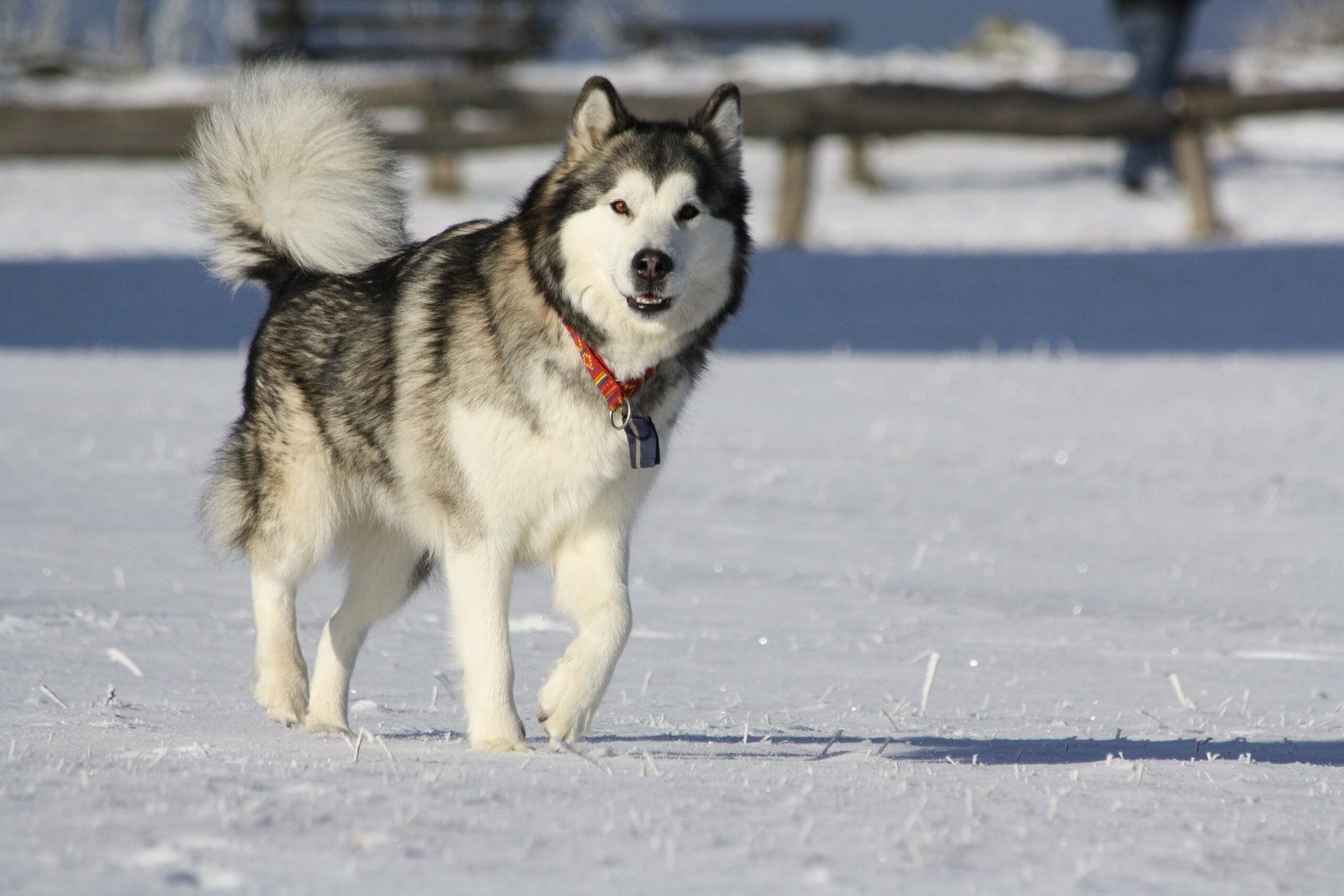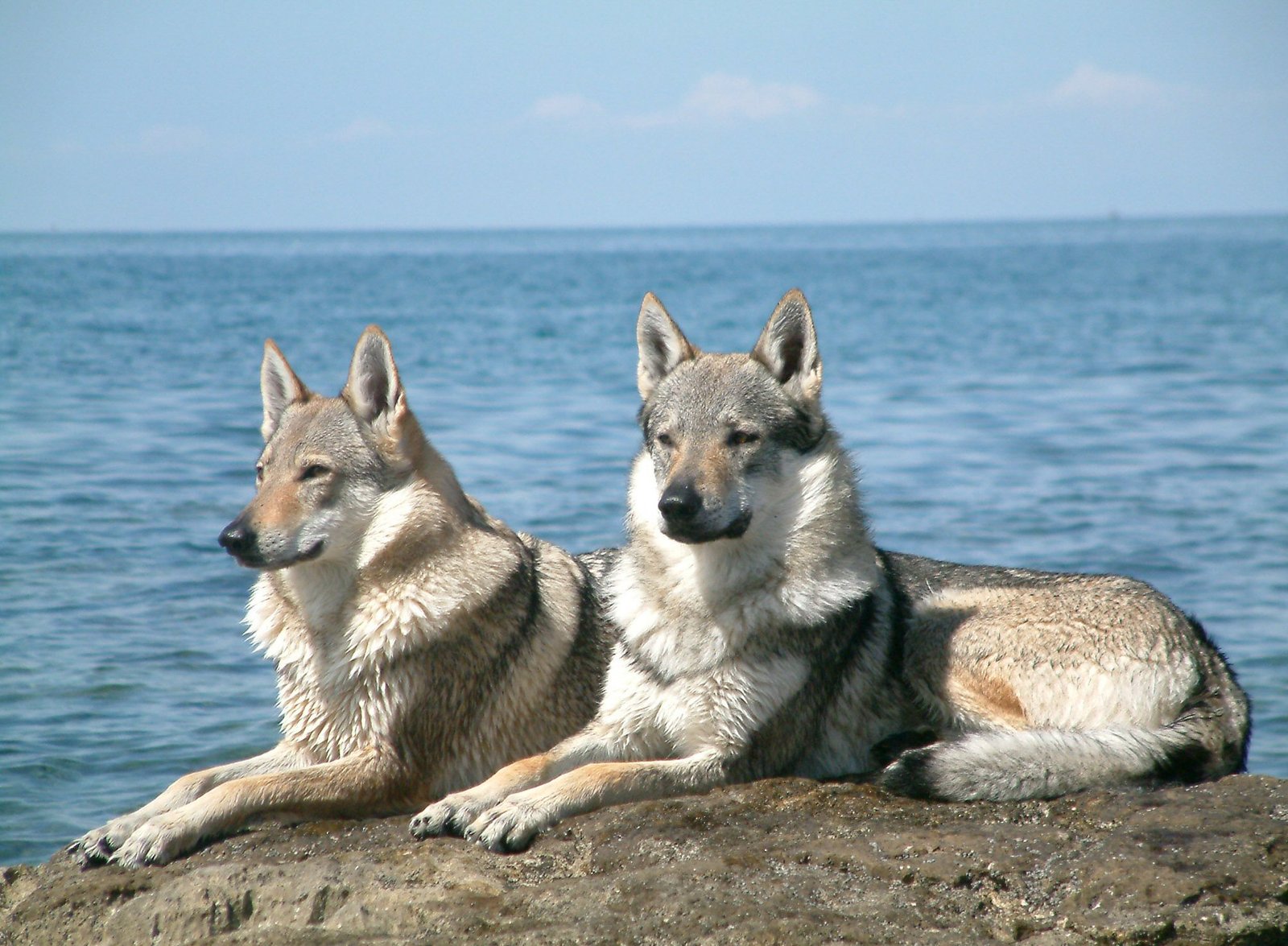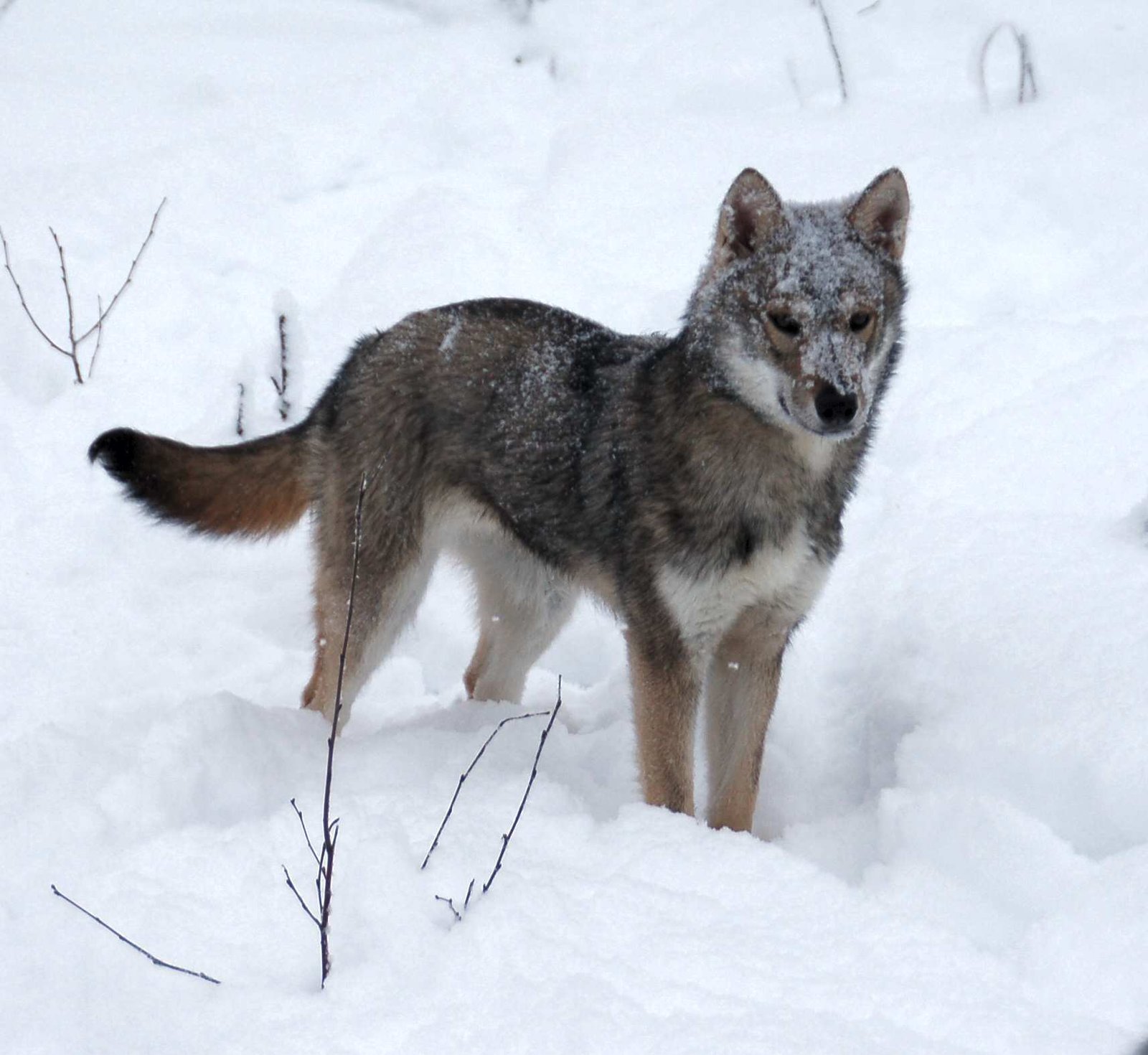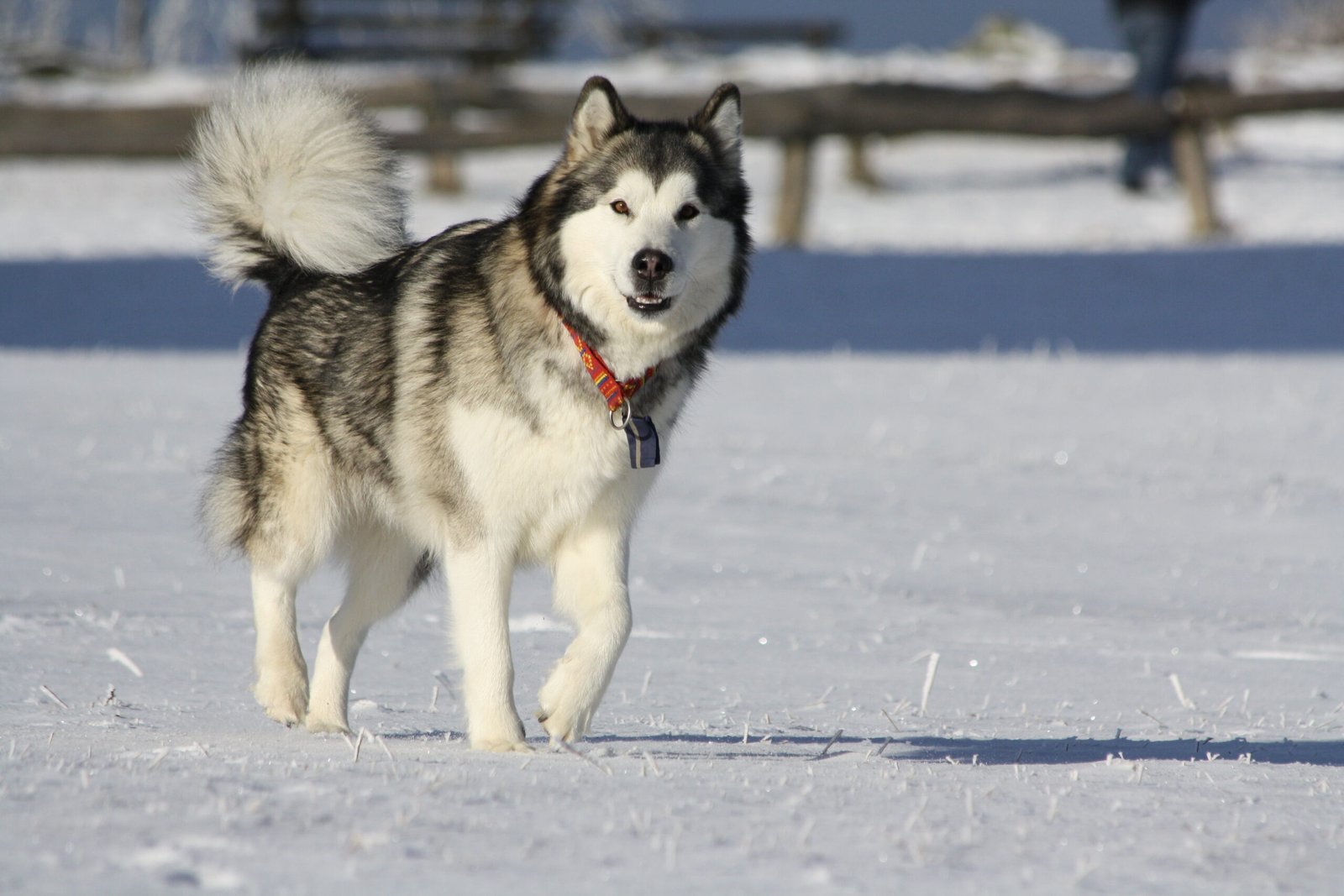In the vast world of canines, there exists a group of dog breeds that are not just companions but are deeply connected to their wild ancestors—the wolves. These breeds possess an innate vigor, speed, and agility that make them capable of running alongside their untamed relatives. For the dog enthusiast, exploring these breeds reveals not only their physical prowess but also their fascinating histories and unique characteristics. Let’s take a closer look at these ten power-packed dog breeds that share a special bond with the wild.
Siberian Husky: The Arctic Runner
Some dogs have a wild spirit that connects them to their ancient ancestors—the mighty wolves. With powerful builds, sharp instincts, and boundless endurance, these breeds were bred for strength, resilience, and survival in challenging environments. Whether used for herding, guarding, or pulling sleds, these dogs possess an untamed energy that echoes their wolf-like heritage.
The Siberian Husky is often the first breed that comes to mind when thinking of dogs that could run with wolves. With their striking blue or multi-colored eyes and distinct facial masks, these dogs are as beautiful as they are powerful. Originally bred by the Chukchi people of Siberia, Huskies were designed to pull sleds over long distances in harsh Arctic conditions. Their endurance and willingness to work are unparalleled. Much like wolves, Huskies are pack animals with a strong sense of hierarchy and loyalty. Their playful nature and boundless energy can sometimes be a challenge for inexperienced owners, but their friendly demeanor makes them a favorite among families.
Alaskan Malamute: The Gentle Giant

The Alaskan Malamute is another breed that echoes the spirit of the wolf. Known for their strength and endurance, Malamutes were originally bred to haul heavy freight as sled dogs. Their thick double coat protects them from freezing temperatures, and their powerful build makes them excellent working dogs. Despite their formidable appearance, Malamutes are known for their gentle and affectionate nature. They are fiercely loyal to their families and have a playful side that endears them to children. Like wolves, Malamutes communicate through a variety of vocalizations, including howls, which can be both entertaining and a reminder of their wild heritage.
German Shepherd: The Versatile Protector
Renowned for their intelligence and versatility, German Shepherds are often associated with police and military work. However, their lineage and physical capabilities also align them with the wolf. German Shepherds possess a powerful build, keen senses, and a high level of trainability. These traits make them exceptional working dogs in a variety of roles, from herding livestock to search and rescue operations. Their protective nature and unwavering loyalty have earned them a place in many households as both guardians and companions. Like wolves, German Shepherds thrive on structure and routine, making them happiest when they have a job to do.
Shikoku: The Japanese Hunter
The Shikoku dog, originating from Japan, is a lesser-known breed that shares a close resemblance to the wolf. This breed was developed for hunting in mountainous regions, and its agility and endurance are unparalleled. Shikokus are known for their alertness and intelligence, making them excellent hunters. Their independent nature can sometimes be mistaken for aloofness, but they are deeply loyal to their families. Like their wild counterparts, Shikokus are cautious around strangers and thrive in environments where they can exercise their natural instincts. Their wolf-like appearance and spirited demeanor make them a fascinating breed for those interested in primal canine traits.
Alaskan Klee Kai: The Miniature Companion
The Alaskan Klee Kai is a relatively new breed, often referred to as a miniature Husky. While smaller in size, these dogs pack a lot of energy and share many traits with their larger cousins. Bred to be companion dogs, Klee Kais are intelligent, active, and curious. Their playful nature and compact size make them suitable for apartment living, provided they get enough exercise. Like wolves, they are pack-oriented and enjoy being part of a family. Their striking resemblance to the Siberian Husky, combined with their energetic personality, makes them a unique choice for those looking for a smaller dog with a wolf-like spirit.
Samoyed: The Smiling Sled Dog

Known for their friendly “Sammy smile,” Samoyeds are another breed that can trace their roots back to the harsh climates where wolves roam. Originally bred by the Samoyedic people in Siberia, these dogs were used for herding reindeer and pulling sleds. Their thick, fluffy coats protect them from the cold, while their playful and gentle nature makes them beloved family pets. Samoyeds are social animals that thrive on companionship, similar to wolves in a pack. Their innate friendliness and love for human interaction make them excellent therapy dogs. Despite their large size, they are known for being gentle with children and other pets.
Greenland Dog: The Rugged Adventurer
The Greenland Dog is a robust and resilient breed, known for its strength and endurance in the Arctic regions. This breed has been used by Inuit people for centuries as sled dogs, capable of hauling heavy loads over vast icy landscapes. Greenland Dogs are independent and have a strong survival instinct, much like their wild ancestors. Their thick coats and muscular build allow them to thrive in extreme conditions. While they are not as common as other sled dog breeds, their loyalty and hard-working nature make them invaluable to those who appreciate their unique capabilities. They are a testament to the connection between domesticated dogs and their wild counterparts.
Czechoslovakian Wolfdog: The True Wolf Hybrid

The Czechoslovakian Wolfdog is a breed that was intentionally created by crossing a German Shepherd with a Carpathian wolf. This breed was developed for military purposes, combining the trainability of the German Shepherd with the endurance and strength of the wolf. The result is a dog that closely resembles its wild ancestor in both appearance and behavior. These dogs are intelligent, courageous, and require an experienced handler. They are known for their loyalty and bond strongly with their owners. Their wolf-like instincts make them excellent working dogs, but also require a commitment to training and socialization to ensure they are well-adjusted companions.
Tamaskan: The Wolf Lookalike

The Tamaskan is a breed specifically developed to resemble a wolf, without the wild traits. This breed is a mix of several Northern breeds, including the Alaskan Malamute, Siberian Husky, and German Shepherd. Tamaskans are known for their striking appearance, with a thick coat and wolf-like facial features. Despite their wild looks, they are gentle and friendly, making them suitable for families. They are social animals that enjoy being part of a pack, whether it’s with humans or other dogs. Their calm demeanor and affectionate nature make them great companions for those who admire the beauty of wolves but prefer the temperament of domesticated dogs.
American Eskimo Dog: The Enduring Worker

The American Eskimo Dog is one of North America’s oldest and rarest breeds. They have a thick coat and powerful build, adapted to endure the harsh Arctic environment. American Eskimo Dogs are loyal and hardworking, with a strong instinct for survival. They are social creatures that thrive on interaction and companionship, similar to wolves. Despite their rarity, those who own American Eskimo Dogs cherish their unique qualities and connection to the wild.
These ten breeds not only showcase the incredible diversity within the canine world but also highlight the enduring bond between dogs and their wild ancestors. Each breed, with its unique traits and history, offers a glimpse into the primal world of wolves, while providing loyal companionship to those who welcome them into their homes.

Andrew Alpin from India is the Brand Manager of Doggo digest. Andrew is an experienced content specialist and social media manager with a passion for writing. His forte includes health and wellness, Travel, Animals, and Nature. A nature nomad, Andrew is obsessed with mountains and loves high-altitude trekking. He has been on several Himalayan treks in India including the Everest Base Camp in Nepal.






